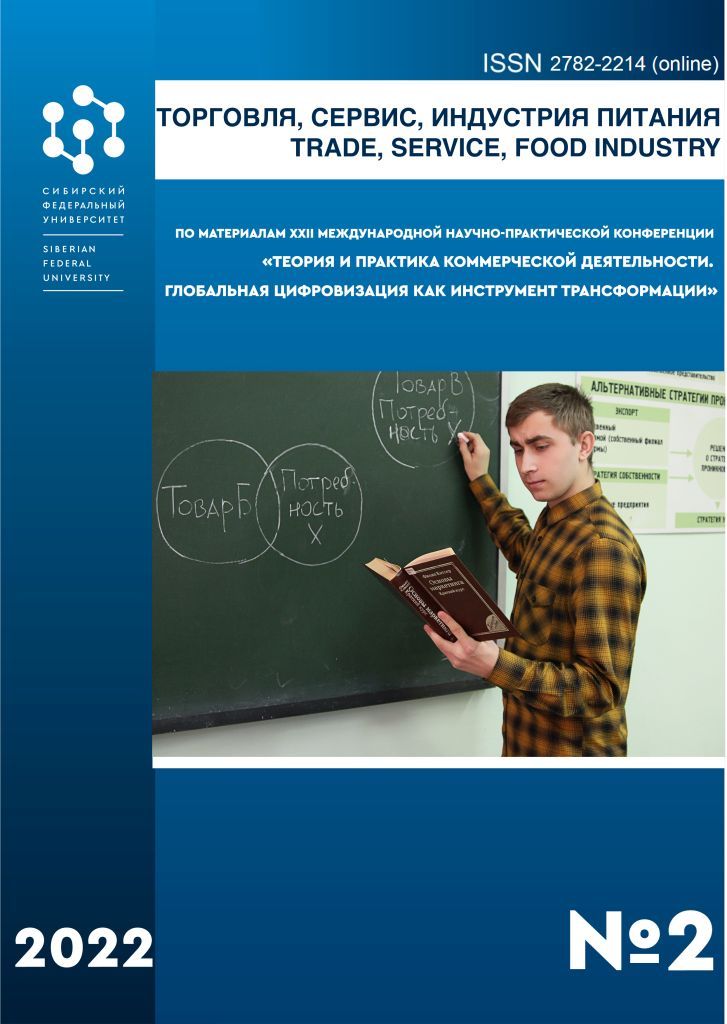Vladivostok, Russian Federation
The article examines the behavior of Chinese consumers when choosing agricultural products on the Internet. In China, much attention is paid to the development of agriculture. But, analyzing the current sales volumes of agricultural products in the PRC market, it should be noted a decrease in demand for this type of goods. The decline in sales can be attributed to the fact that today a large proportion of consumers are used to buying goods on the Internet. However, traditional channels remain the predominant channels of promotion in the market of agricultural products. Not all manufacturers are ready and have the opportunity to use modern digital technologies when promoting products. Therefore, the paper pays attention to the analysis of problems related to the promotion of agricultural products on the Internet. Knowledge of the behavior of Chinese consumers when choosing agricultural products will enable both Chinese producers and Russian producers of agricultural products to adjust their promotion strategies in the Chinese market.
consumer behavior, agricultural products, consumer preferences, agricultural products market
1. Akkanina, N. V. [et al.] (2019). Marketing in the agro-industrial complex: textbook and workshop for academic bachelor's degree. Moscow: Yurayt. 314.
2. Alekseeva, E. A. (2018). Changing consumer behavior of the population of the People's Republic of China in relation to food.In: Eastern analytics, 2, 81−92.
3. Antasyuk, V. I. (2017). Factors of demand in the market of agricultural products.In:Modern scientific research and innovation, 1, 17−29.
4. Belyaevsky, I. K. (2017). Marketing research: information analysis forecast.Moscow:Course, 852 p.
5. Wang Hui Analysis of market demand for agricultural products [Electronic resource]. Access mode: http://bbs.paidai.com/topic/227635 (Accessed: 10/30/2021)
6. Vysotskaya, T. R. (2017). The role of electronic commerce in the development of the country's digital economy.In: Bulletin of the Khabarovsk State University of Economics and Law, 5, 66−69.
7. Golik, V., Zhonghua, L. (2017). Implementation of Internet marketing by Chinese companies.In:Science and Innovation, 176, 37−39.
8. Musatova, Zh., Skorobogatykh, B. I. (2017). Transformation of consumer behavior models and customer experience management. In: Bulletin of the Faculty of Management of SPBGEU, 1−1, 294−298.
9. Pingin, D.V., Kuzmina A. D. (2019). Analysis of Internet marketing tools for promotion in the Chinese market. In: Economics and Business, 6, 14−19.
10. Xiao, Ya. (2020). Digital technologies in the agro-industrial complex of China.In:Physics and modern technologies in agriculture, 1, 355−359.
11. Sharenkova, T. A. (2019).Features of Chinese marketing and Chinese consumers in modern conditions / T. A. Sharenkova, M. V. Nikitina / Russian-Chinese studies, 3, 68-73.
12. Yuancheng, Yu. (2018). Features of the development of the vegetable market in China / Yu. Yuancheng, L. A. Kalinina. In: Vegetables of Russia, 1, 88−101.
13. Baylis, K. (2018). Agricultural Market Liberalization and Household Food Security in Rural China. In: American Journal of Agricultural Economics, 101, 250−269.
14. Haring, J. (2017). Different Prices for Identical Products? Market Efficiency and the Virtual Location in B2C E-Commerce. In: Econctor, 4, 234−247.
15. Li, S. (2019). Consumer confidence and consumers' preferences for infant formulas in China. In: Journal of Integrative Agriculture, 18, 1793−1803.
16. Li, Y. (2019). What makes better village development in traditional agricultural areas of China? Evidence from long-term observation of typical villages. In: Habitat International, 83, 111−124.
17. Liu, Y. (2019). Climate Change Effects on Agricultural Production: The Regional and Sectoral Economic Consequences in China. In: Earth's Future, 8, 111−145.
18. Nie, W. (2020). Market demand and government regulation for quality grading system of agricultural products in China. In: Journal of Retailing and Consumer Services, 56, 102−134.
19. Tian, Zh. (2019). A new evolution model for B2C e-commerce market. In: Information Technology and Management, 14, 205-2015.
20. Tyner, W. (2018). Impacts of Possible Chinese 25% Tariff on U.S. Soybeans and Other Agricultural Commodities. In: JSTOR, 33, 1−17.
21. Wu, W. (2019). Impact of Consumer Awareness, Knowledge, and Attitudes on Organic Rice Purchasing Behavior in China. In: Journal of Food Products Marketing, 25, 549−565.
22. Xiong, T. (2018). Seasonal forecasting of agricultural commodity price using a hybrid STL and ELM method: Evidence from the vegetable market in China. In: Neurocomputing, 275, 2831−2844.
23. Yan, Zi Xiao (2020). Digital technologies in the agricultural sector of China. In: Journal of dairy science, 130, 355−360.
24. Zhang, Q. (2019). Research on Customer Satisfaction in B2C E-Commerce Market / Q. Zhang. In: Informatics and Management Science, 3, 283−291.








